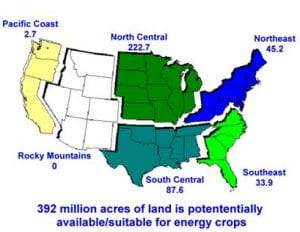The information on this page was prepared by:
| Austin Davis | williamd@usc.edu | Civil/Environmental Engineering |
Biomass: Overview
Biomass:
- Organic Matter available on a renewable basis
- Forest and Mill Residues (saw dust, wood chips, etc.)
- Agricultural Crops/Wastes (such as rice husks)
- Wood and Wood Wastes
- Animal Wastes
- Municipal Wastes
- Energy crops: fast-growing trees and plants grown on underutilized agricultural lands and causing much less damage to soil nutrients than standard fruit-bearing crops
 Costs can vary widely depending on the type of biomass and any processing or handling required before the material can be utilized as a fuel.
Costs can vary widely depending on the type of biomass and any processing or handling required before the material can be utilized as a fuel.
For self-use in the forest products industry, biomass is essentially free. For others, purchasing costs of forestry-produced biomass residues (i.e. wood) ranges between $0.50 and $3 per million Btu (mmBtu).
A rough estimate of dedicated feedstock (energy crop) costs put prices somewhere in the middle at a little over $2.50 mmBtu.
Another form of biomass, municipal solid waste (MSW), is usually land filled for a fee, giving it a negative fuel price. However, plant operators must process MSW to eliminate toxins as well as install emissions control equipment.
In comparison, the cheapest coal costs between $1.50 to $2 mmBtu, while natural gas prices can range from $3 to $4 mmBtu.
Benefits of Power generation with biomass (biopower) are also varied. A major although somewhat obvious benefit is that biopower is an environmentally friendly form of energy generation and would help to reduce dependence on polluting and increasingly costly fossil fuels.
As far as providing fuel for a large scale biopower program, the growth of energy crops could create new markets, increase employment, and provide new uses for agricultural land currently out of production. The use of biomass residues, rather than disposal, would also reduce dumping in landfills.